365 Urban Species. #262: Jewelweed, Touch-me-not
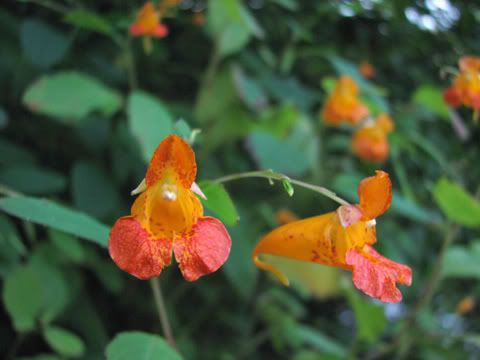
Photos by cottonmanifesto. Locations: Olmsted Park, Boston and Brookline.s
Urban species #262: Jewelweed.
Often you will hear nature nuts gripe about common names. One of the problems with using common names is that several common names may refer to the same organism. Sometimes, one common name is used during one phase of the organism's life cycle, and a different common name is used later (see: Dauca carota). Such is the case with jewelweed, or if you prefer, touch-me-not. With its succulent, translucent stems and beautiful little luminous orange flowers, "jewelweed" is quite apt. Water droplets on the leaves glisten silvery. When the flowers give way to fruit (a gradual process; male and female flowers develop at different times, to encourage cross pollination) the mature seedpods unravel explosively when touched, earning its second common name. Touch-me-not may be the more often used common name, since so many young people (and the young at heart) enjoy setting off these little organic fireworks. When fully mature (the seeds darken--that's how you know you have a good one) the slightest touch will cause the sudden unraveling, flinging the seeds away. In the absence of whimsical nature lovers, jewelweed seeds can be dispersed by the movements of animals or the rain, and they will eventually open up by themselves as well.
Jewelweed is a familiar weed, growing along path edges and lawn borders, and along the wet margins of swamps and ponds. Despite its prevalence, it isn't usually considered a serious pest; it can be removed, roots and all, with a single finger, or en masse with a rake.
This plant is the one most often pointed out to me for its purported folk medicine uses. The juice of the crushed plant can be used against poison ivy and other itchy rash--this appears to have been scientifically tested, with positive results. Jewelweed may be similar to aloe in this way. It has also been pointed out to me that jewelweed and poison ivy are often found growing in the same places--recently cleared or disturbed areas--is Nature providing a cure along with Her curse? Maybe, maybe not; all the plants profiled in this project grow in recently cleared or disturbed areas. The fact that some may be antidotes for some others seems coincidental to me.
Jewelweed flowers produce high-octane nectar. Hummingbirds will visit them, and they are the perfect size for bees to crawl right into them. Bees will feed at the comparatively rich nectar of jewelweed on these cooler days as summer turns to fall and save the weaker flowers of aster and goldenrod for indian summer.
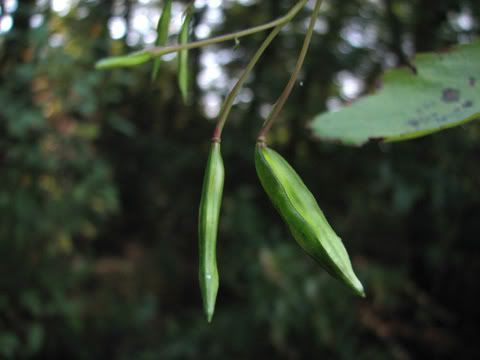
Almost ready...
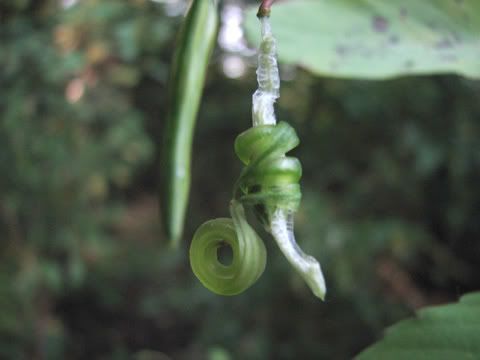
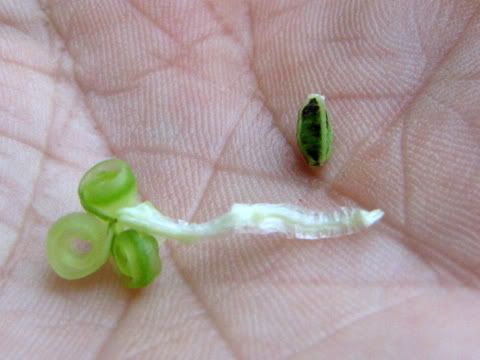
The pod unraveled.
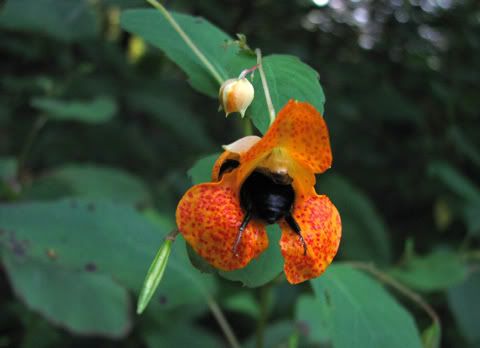
A carpenter bee, lost in nectar.